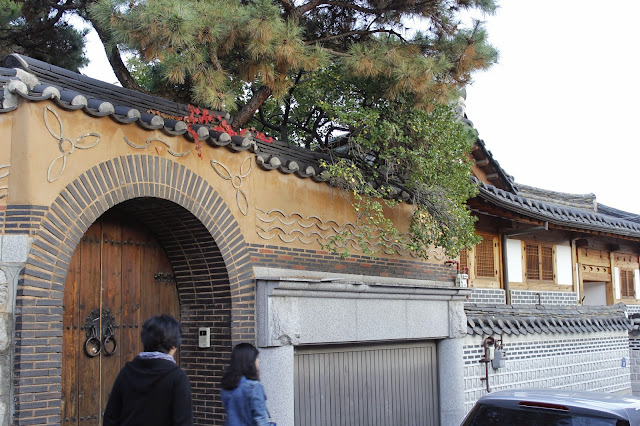This is the actual residential area consisted of being
concentrated Korean traditional Hanok (a kind of houses) village, the only one
in Seoul, is the residential area of high-ranking government officials and
nobilities during the Joseon-dynasty (1392-1897) also.
It is dated back to Iron’s age (over 1500 years ago) to use Ondol and Daecheong systems which is featuring point of this house in Korea. In 1930s Hanyang (former name of Seoul) had gotten high population due to crowded people from the rural area and became highly concentration in many aspects. It had caused many social and economic problems, especially in their residential side. The demand meets the supply as it is. Company dealing with residence management bought large land in this area and built Hanok village which had been improved in the style of it as before.
The size was smaller, glass door was installed at Daecheong, iron sheets was galvanized in its’ roof additionally to Cheoma (edge of Hanok’s curvy roofs), standardized wooden beam was used for its’ efficiency due to massive construction. New developed house of this style had been kept the characteristics of traditional house and been settled as a new type of urban house and showed luxurious decoration in particularly.
It needs natural materials to build this house. Tiled roofs baked soil, pine trees for timber, stone-blocks construction for Ondol of the bottom in room, Hanji(Korean traditional paper used for windows and doors, beautiful and breathable), and patterned wall costs many expense. Ondol(온돌) is a kind of floor-rock-based heating system by principle of convection phenomenon during cold winters, Daecheong(대청) is a cool wooden-floor style hall on the front porch which keeps the house cool. Cheoma(처마) on the roof is to control the amount of sunlight that enters the house during hot summer.
This is very expensive house to buy and to maintain. So ownership for this house means the symbol that owner is very rich and has the authority on many ways.
Besides, the propagation of complex type tenement housing and apartment caused the decreasing of the number of Hanok from 800,000 into 12000(today) in Korea so rapidly. Now a days as by Hanok has decreased it means Giwa house (tiled roof) in the public senses with reduction of meaning. Fortunately, the value of this house is refocused with its functional efforts eco-friendly and therapy for atopy and asthma caused by environmental factors and unique beauty of this house itself.
Some difficulties are still left. It is inconvenience on
the space of the functional connection by user’s circulation system. The wall
is not thick enough and has some crack causing chill atmosphere. Wooden timber is
very expensive still and it is difficult to find out the skillful builder. Despite
of these reasons, new attempt to improve their house is trying continuously too
also. This area is always crowded by Korean and foreigners. So you might be miss
real worth and just end with only taking photos. And you might be in some fear
to lose your way between in many alleys. Don’t be afraid. This is uptown, so
can easily reach the lower road which is starting point.
There are cultural
center, guest houses, restaurant, and teahouse. Bukchon traditional culture
center gives you an opportunity to experience, learn, and immerse in Korean
traditional culture.
 |
| Kokdu museum for art craft made by wood |
Tip ; This is residential area. Houses are not allowed to
get inside to the public.
You can just
see through by restaurant, tea house, craft houses only.
I want to recommend
to visit the Bukchon traditional culture center at first.
Bukchon
traditional culture center >>>click here !!













0 개의 댓글:
댓글 쓰기